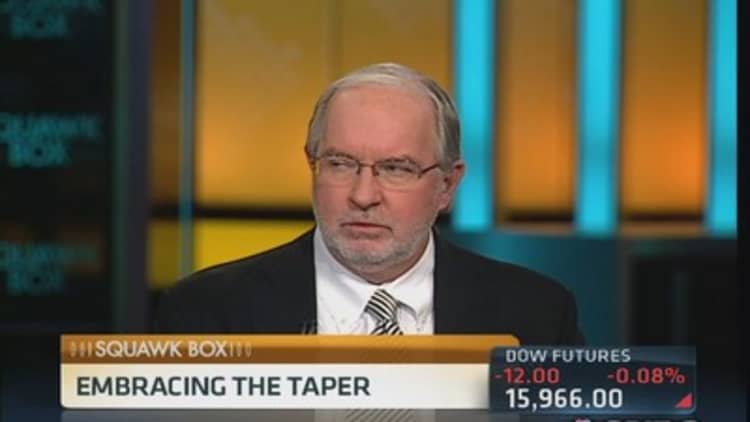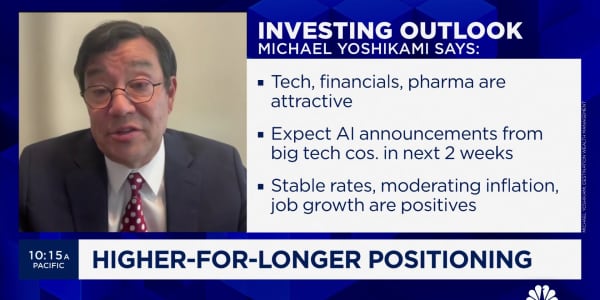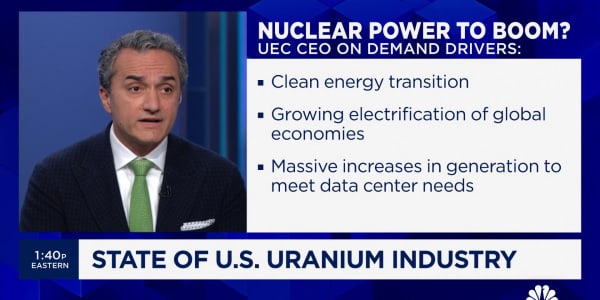When the Federal Reserve unveiled the bond buying programs everyone now knows as quantitative easing, there were two complaints whose prominence was outmatched only by their erroneous assertions.
The first was that the Fed was printing money that would quickly debase the currency and lead to high inflation. The second, which followed a little while later, was that banks weren't lending out the reserves the Fed was giving to them.
We hear these things a lot less now. Most people can believe the evidence that QE didn't produce high inflation, even if they don't understand precisely why. And the notion that the amount of excess reserves in the banking system meant that banks weren't lending has been explained as nonsense to the satisfaction of anyone paying attention.
I'm afraid, however, that we're now in danger of the opposite errors rising to prominence. People who understand that QE isn't "money printing" and that banks don't lend out reserves (and aren't reserve constrained) are quite regularly falling into a false feeling of comfort about QE—a feeling made all the more dangerous because it is accompanied by a feeling of wisdom by those experiencing it. Some of the people most sophisticated about QE are fooling themselves.
Too clever about QE by half
Three times in the last few days, intelligent and informed people have told me that they know QE cannot produce inflation, cannot produce asset bubbles, cannot drive the prices of equities or other bonds up because all that happens in QE is the swap of a Treasury for reserves held at the Fed. This is mistaken because that is definitely not all that happens.
One of the better examples of this type of thinking can be found in a recent Bloomberg Businessweek column by Peter Coy:
Quantitative easing isn't "printing money." If it were, the supply of money would have soared and the U.S. would have either much more economic growth or much more inflation—or probably some of each. Instead, the Fed's purchases have merely managed to give the banking system a huge increase in unneeded reserves.
The way to increase the amount of money—and get the Bureau of Engraving and Printing to rev up its presses—is for banks to make more loans. Borrowers will put most of the money on deposit, but they will take some of it out to spend. That will increase the amount of money being passed around between buyers and sellers—i.e., in circulation. That process is largely beyond the Fed's control.
This isn't so bad. In fact, it's close to being right. QE is responsible for a huge part of the rise in reserves in the banking system. And, as we all learned while disproving the alleged scandal of high reserve growth despite low loan growth, the banking system cannot get rid of reserves injected through QE by making loans.
Where it goes wrong, however, is in taking the underlying idea too far, to the point where reserve injection through QE is something that somehow stays hermetically sealed in the Federal Reserve system and can't "leak out" into the broader economy, especially if banks aren't increasing their lending by much. It can, it does, and it already has. As we'll see in a moment, banks acquire the QE reserves by issuing liabilities, mostly in the form of deposits.
To put it more bluntly: QE creates bank deposits. Which are also known to most people as "money."
The first thing to notice is that reserves aren't the only thing that have grown because of QE. So has the money aggregate known as M-1, which is composed of currency in circulation, demand deposits and other checkable deposits. Contrary to what Coy implies, the money supply is soaring. And as this chart from the New York Fed's blog Liberty Street Economics shows, reserves and M-1 have grown right alongside each other because of QE.
The reason for this can be explained relatively simply. When the Fed buys a Treasury or an agency security from a primary dealer, the dealer has to acquire that security from somewhere. Some of the securities sold to the Fed come from inventory the primary dealers already had but a good portion is acquired by the dealers from other security holders, such as nondealer banks, investors and large funds. The primary dealer pays for the security by crediting a deposit account of whoever—a bank, a household, a pension fund—is selling the security. So the Fed gets the Treasury, the dealer gets a reserve injection and the Treasury seller gets a deposit. So we see, QE creates deposits.
Liberty Street puts it in a slightly more complicated way (but it amounts to the same thing):
Reserves held with the central bank are assets for banks. As the Fed expands reserves, banks must either sell other assets (keeping the overall level of assets unchanged), issue more liabilities or equity (expanding the level of assets), or some combination of the two. In fact, banks did not reduce their overall holdings of other assets as reserves increased. Instead, banks mainly funded these new assets by issuing additional liabilities, including deposits. Over the same period, interest rates were low, reducing the incentive for households to place their funds in interest-earning savings accounts rather than checking accounts. Correspondingly, much of this increase in bank liabilities has been in the form of checkable deposits.
In other words, banks fund the acquisition of reserves by issuing deposits. The acquisition of these deposits by bank customers, in turn, was funded by the sale of Treasurys. The Fed funded the acquisition of Treasurys by issuing reserves.
QE really is different

Importantly, these QE deposits add to the net deposits in the banking system. This is different from when a dealer acts as a private sector broker, buying a Treasury from one customer and selling it to another. In that case, the Treasury seller gets credited for a deposit that is, more or less, matched by a debit in the Treasury buyer's account. (The difference, if any, gets booked as a trading profit in the dealer's account.) There's no net deposit increase. It all balances.
It's also different from when a dealer sells a Treasury that it previously held (perhaps from the original issuance). In that case, the dealer sells to the Treasury, gets credited in reserves, but no new deposit is created. That's the scenario Coy was referring to. In that case, you only get a new deposit when the dealer makes a loan.
(Read more: Ray Dalio worries the Fed's QE may run out of gas)
But with a lot of QE transactions, there is new net deposit creation. There is no private sector deposit account debited from the sale of the Treasury because it is the Fed that is buying. What is recorded instead, is a debit of a private sector Treasury. The Fed records a liability—the new reserves—but doesn't debit these reserves from anywhere. They are created with a keystroke.
These deposits created through QE are real bank deposits. They are M-1. The funds in them can be withdrawn as cash currency, spent, invested, or held in the deposit accounts. They are real money, created through QE. And, if investors were so inclined, they can be used to purchase financial assets from high yield bonds to stocks. They could, theoretically, produce assets bubbles and even inflation, if the deposits were just spent on consumer goods.
This doesn't mean that this is happening now. I suspect at lot of QE created deposits simply remain as deposit assets of the Treasury sellers. Some of it, however, probably goes into assets that are close substitutes for Treasurys.
(Read more: The great fight over QE and deflation)
As I've written in the past, the exchange of a Treasury for a bank deposit doesn't suddenly make someone decide they'd rather spend instead of save. And although M-1 deposits grow, the amount of Treasurys in the private sector is relatively reduced. If you construe the money supply very broadly, so that Treasurys are included as money, there's no net creation of money, just a change in its composition. Unless or until the changes in the composition of this broad version of the money supply lead to changes in spending and investing tendencies, QE shouldn't be expected to have broad effects.
It's true that QE is an asset swap. But it's not just an "asset swap." It's actually a number if swaps of liabilities for assets. The liabilities: reserves from the Fed, deposits from the banks. The assets: Treasurys to the Fed, reserves to the banks, deposits to original Treasury owner.
—By CNBC's John Carney. Follow him on Twitter @Carney






